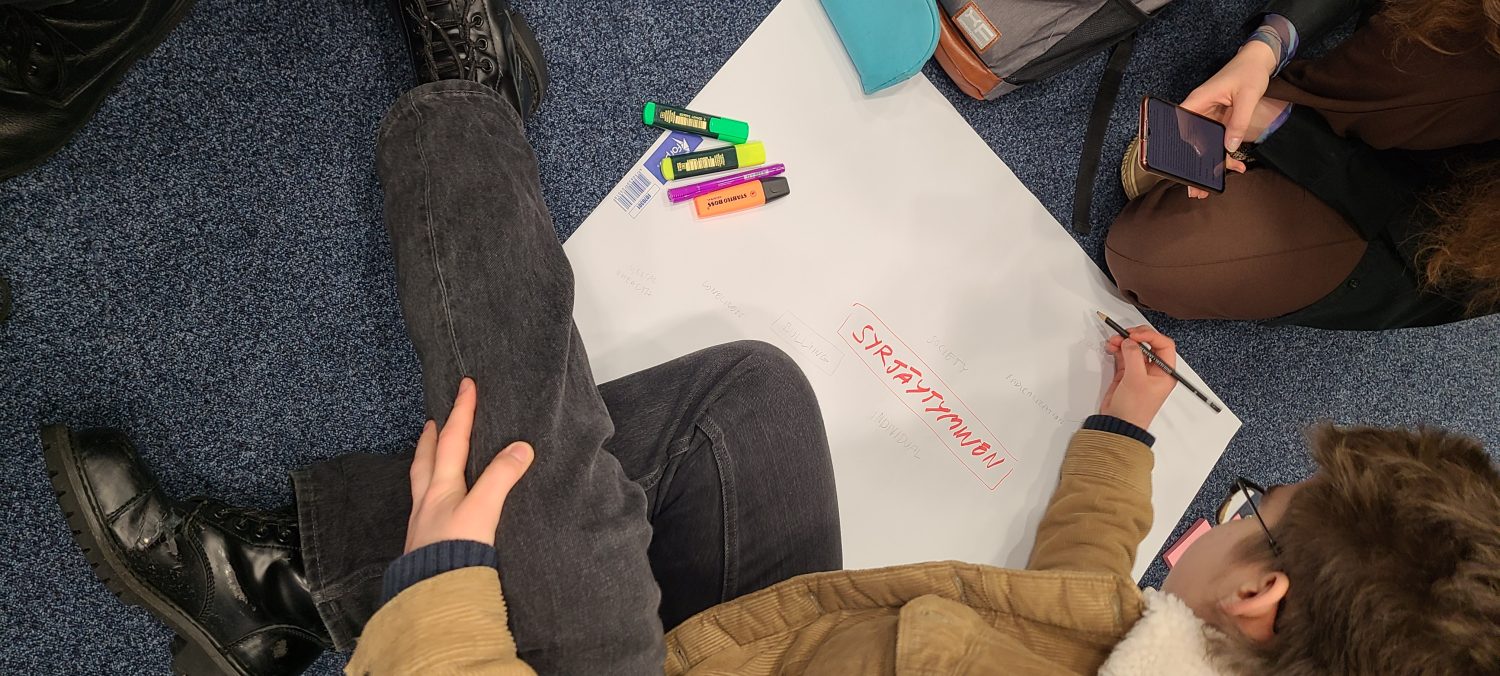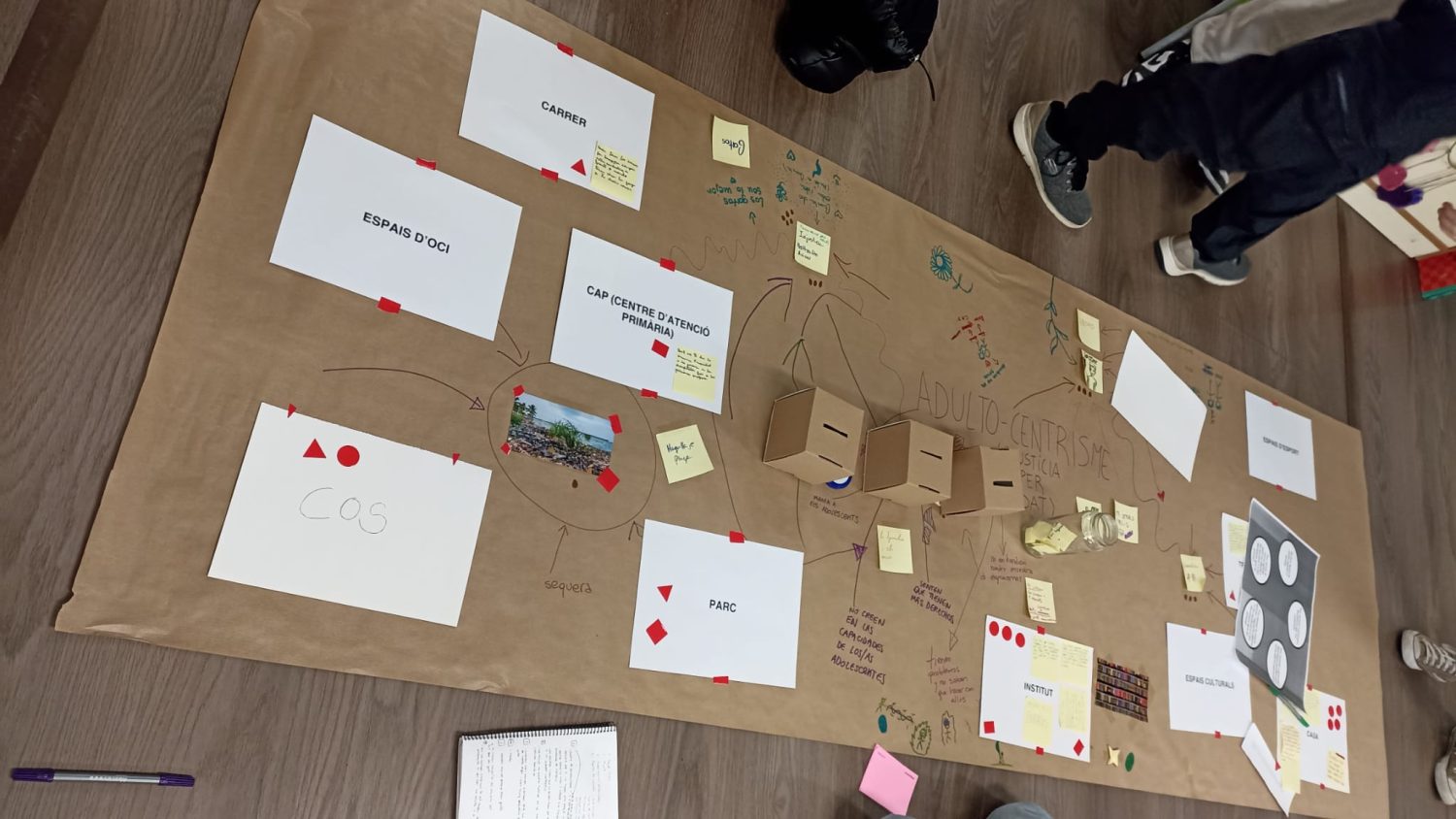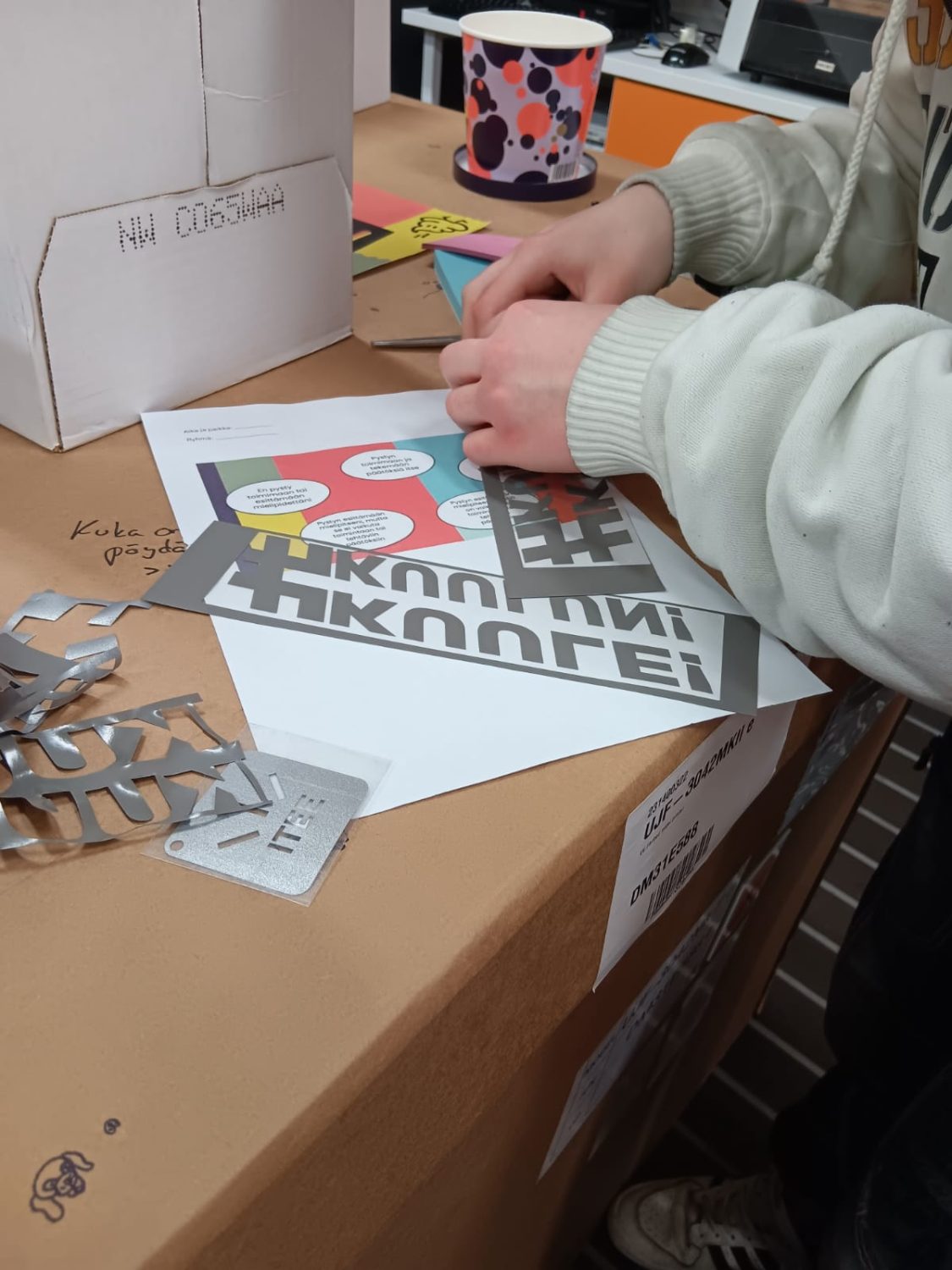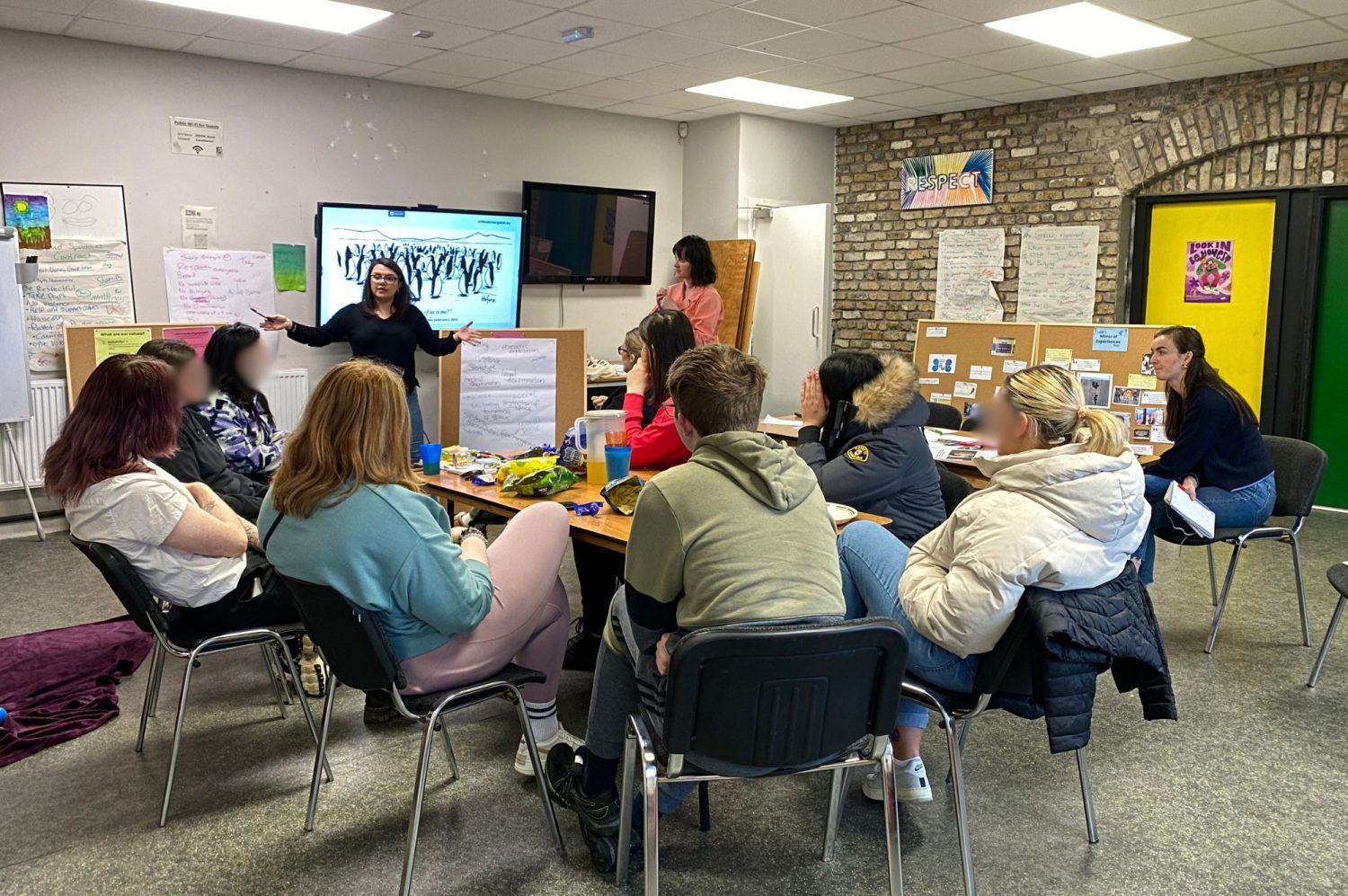by Eva Durall Gazulla, Marianne Kinnula, Yusra Niaz, Heidi Hartikainen, Caitlin White, Laura Malinverni, Marina Riera Retamero

With far-right ideologies rising and ruling, and some world leaders implementing agendas that openly threaten core democratic values such as equality, diversity, and justice, it is not an exaggeration to say that democracy itself is under threat. For years scholars and civil society have warned about the crisis of democracy and the need to rethink it. Addressing this challenge raises critical questions: how can democracy be strengthened? What practices and approaches should be adopted? And, importantly, who should be involved in this process?
Reimagining democracy is the starting point of the Critical ChangeLab project (CCLAB), a three-year project funded through the Horizon Europe programme, aiming to rethink western democracy’s contradictions and to cultivate democratic cultures together with children and youth in what we call ‘Critical Change Labs’, where young people examine everyday democracy. Young people are at the center of the project as they are among the groups historically excluded from voting, which has traditionally been regarded as democracy’s hallmark mechanism. The project takes a stand towards participatory democracy materialized in everyday practices that permeate youth’s experiences. From this view, youth not only have a say about how democracy should be but also have the capacity to influence and collaborate with other actors to change the status quo.
A central aspect in CCLAB is the use of arts and creative practices to explore, critically examine, and envision preferred futures of democracy. Our starting premise is not only that we need to collectively reimagine democracy, but that arts and creative practices can be the key that allow us to explore what everyday democracy means, opening the range of subjectivities and agencies involved and envisioning ways of doing aligned with the democratic ethos. It is an ambitious project, and after almost two years from the beginning we have more questions than answers.
For the purpose of this piece, we focus on three Critical Change Labs organized during the first implementation cycle with teenagers based in Oulu (Finland), Barcelona (Spain) and Dublin (Ireland). In these labs, young people (14-24-year-olds) explored issues around i) democracy in the everyday, ii) community and identity, and iii) adultcentrism. The labs followed a four-phase model starting with (1) Onboard: an introduction to the lab, the relations and ways of working teenagers wanted to cultivate; (2) Question and Analyze: identifying tensions, moving from the individual to the systemic contradictions and critically examining them from multiple perspectives; (3) Envision and Act: imagining what could be otherwise, engaging in design and action; and finally (4) Reflect: jointly reviewing their experiences and what they have learned throughout the process. While these labs shared some similarities in terms of methodology, as well as the use of arts and design techniques, they presented important differences. The main differences stemmed from the learning environments in which the labs were hosted (with some taking place in formal education settings, and one in informal learning context), participants’ ages, as well as the overall duration of the lab and the length of the sessions.
At the core of the Envision and Act phase is imagining different futures and fostering collaboration among participants. Here, participants build on the tensions they have identified and examined in prior phases and imagine what kind of alternative futures there could be. Deconstructing and disrupting the commonplace (meaning all those ideas and values that tend to be taken for granted and left unquestioned) is an intrinsic part of participants’ artistic and creative explorations conducted during this phase. In terms of methods, in Envision participants’ imagination is fostered through creative practices such as design futuring, fabulation-based practices, and speculative design. Beyond envisioning alternatives, youth are also invited to think about how to implement their ideas, activating change and seeking transformation. Next, we highlight some of the insights gained through the joint analysis and reflection of the Envision and Act phase.
From identifying tensions to envisioning alternatives: radical imagination is hard work
From a research perspective, these approaches are recognized as promising strategies for fostering a range of learning goals, such as supporting critical reflection on current eco-social challenges, encouraging students to advocate for inclusive values in their lives and releasing children’s imagination. However, participants in the three labs often struggled in envisioning alternative futures. The challenges that they faced included difficulties in imagining futures that break away from current habits and transcend existing paradigms. As well as this, participants tended to envision utopia without considering realistic pathways to achieve them and struggled to translate abstract ideas into practical, actionable visions.These difficulties highlight the need to critically examine and reimagine the ecologies of imagination within educational practices, especially those aimed at fostering transformative change. As Bell Hooks asserts, “what we cannot imagine cannot come to be”, and “imagination is one of the most powerful forms of resistance that oppressed people can use”. This underscores the importance of thinking beyond established frameworks to design practices, strategies, and ecologies that encourage both educators and youth to feed and free their radical imagination, breaking free from habitual patterns of thought, thereby opening pathways to actionable and transformative alternatives.

Making democracy: developing a voice of their own through artifacts
At the labs, youth imagined preferable futures about a societal issue they were concerned about. The work conducted during the Question and Analyze phase grounded such envisioning, which was conceived as an embodied practice. Imagining democracy was guided to go beyond abstract thinking and was framed as something to be materialized. Through practices informed by the arts and design tradition, the lab participants faced the challenge of transforming their abstract ideas into something that could be made tangible. Whether it was building a youth-centered space, designing slogans printed in bags, or creating zines, the constructive aspect was conceived as another dimension of thinking.
For instance, at the Oulu lab participants used FabLab equipment like vinyl cutters to cut their designs and heat pressed it on canvas bags and t-shirts. These tangible objects became tokens of both personal expressions and conversation triggers with their close communities, formed by their peers, friends, and other people with whom they might contact through their everyday activities. Engaging in making their views tangible provided new ways of seeing, sharing, and shaping the world. Making was not just about creating artifacts, but a strategy to think with and articulate ideas, externalizing thoughts and developing a sense of agency. The physical objects youth imagined and created helped them transform abstract ideas into tangible forms, allowing democratic values such as voice, representation and dialogue to manifest through design and materiality. Thus, the artifacts became more than just printed designs on pieces of canvas and served as a prompt for engagement and interaction by carrying messages that invited reflection and dialogue.

Learning from the past: Futures as an entanglement of various temporalities
What does the past have to do with the future? The young people we’ve been working with have all participated in the Critical Change Labs that commit to looking at the past developments of an issue in order to analyse its present state and inform visions of the future. In the labs organized in the three countries, the young people looked at the past developments of an issue in order to analyse its present state and inform visions of the future. They created maps, did walking tours, analyzed potential futures scenarios through the futures triangle technique, and did drama role plays. The idea was to creatively engage participants in examining the role that the past continues to play in our present. But why should the process of engaging with the past be important for envisioning futures? Through creatively engaging with aspects of the past we can disrupt assumptions about our present, embrace multiple perspectives, and learn more about the multiple futures that were possible in a given moment.
Research tells us that a key function of brain memory is its role in imagining future events. The ability to remember our own personal past, and how we use that to imagine futures for ourselves is one thing, but how do we ‘remember’ events and histories that we haven’t experienced ourselves? We do it by constructing the past as a combination of our personal memories and our own and shared understandings of the present. Those important events in the narrative of a family, a community, or an individual – we imagine them, and creative methodologies help us in the imagining. They open up opportunities to step away from the constraints of ‘history’ and connect with the people of the past, their lives, and their actions.
Through the activities in these Critical Change Labs participants have connected with people and communities from the past. They have brought their perspectives, their experiences, and their insights into their understanding of the present and their imagining of what is possible in the futures they want to create.

Reimagining society: did it contribute to change?
Imagining alternatives towards democratic futures was (and is) hard. In the Critical Change Labs, participants struggled to move from the identification and critical analysis of a societal issue to ideating what could be done to kickstarting a change. In face of big societal challenges, the possibilities of what participants could do seemed insufficient. Were youth able to change anything through the labs? If the question refers to the crisis of democracy at a broad societal level, perhaps not. If the question refers to their own thinking regarding what they can do when democratic values are undermined at everyday level, then yes.
The labs offered a space where youth could critically reflect on what is happening around them and engage in creative activities that enabled them to imagine what could be otherwise. When struggling to make their imaginings tangible, youth were struggling to articulate their voices. We believe that in addition to the crisis of democracy, we are facing a crisis of imagination. While these artifacts might convey modest alternatives to democracy’s challenges, we see them as valuable as the labs guide youth to go through a process of imagining alternatives, while allowing youth to develop a sense of agency, and enjoy the process. We think these are important aspects for bringing democratic participation to the everyday sphere and for imagining futures infused by democratic values such as the common good, equality, diversity, and justice.
Eva Durall Gazulla is Academy postdoctoral researcher at the INTERACT research unit at University of Oulu. Her expertise areas include media and technology, design and learning using critical approaches as well as participatory design and futures techniques to engage participants in research. Currently, she is involved as a research leader in various projects exploring democratic values in technology design and use with young people. Eva is a member of the CCLABs consortium.
Marianne Kinnula is a professor in human-centered design and digitalization at University of Oulu, with her research in the crossroads of Information Systems and Human-Computer Interaction fields. Her research focuses on user participation, inclusion, and empowerment in technology design. She would like to see a world with socially sustainable innovations: users able and willing to question technology use and technology solutionism and developers designing technology so that it brings value to all stakeholders. Marianne is a member of the CCLABs consortium.
Yusra Niaz is a doctoral researcher at the INTERACT Research Unit, University of Oulu. In her work in Child-Computer Interaction, she collaborates with children and young people in co-design activities to shape future technologies, fostering critical reflection on child-technology interactions. Methodologically, she builds on critical and participatory approaches, more than human design and futures techniques to help youth develop competences that contribute to empowerment processes. Yusra is a member of the CCLABs consortium.
Heidi Hartikainen is a postdoctoral researcher at University of Oulu, doing research in the intersection of activism, empowerment, and technology. Her work focuses on youth engagement and online safety, exploring how technology can empower young people while addressing the challenges they face in the digital world. Drawing on critical and participatory methods, she collaborates with youth to examine emerging technologies and envision their future impact, encouraging critical reflection and active involvement in shaping the digital landscape. Heidi is a member of the CCLABs consortium.
Caitlin White is a Research Fellow in the School of Education at Trinity College, Dublin. She works on democracy education, Irish history, civics education, public engagement, and futures literacy, and is a member of the Science and Society Research Group. Caitlin is a member of the CCLABs consortium.
Laura Malinverni is a Lecturer in the Department of Visual Arts and Design at the Faculty of Fine Arts of the University of Barcelona and a member of the research group “Esbrina: Subjectivities, Visualities and Contemporary Educational Environments” of the same university. Her research focuses on the relationship between technologies, education and creative processes, working both as a researcher and as an educator and artist in different projects. Laura is a member of the CCLABs consortium.
Marina Riera Retamero is postdoctoral researcher, member of the University of Barcelona research group “Esbrina: Subjectivities, Visualities and Contemporary Educational Environments”. Her work draws from arts-based research and experimental anthropology, using qualitative and post-qualitative research methods. Her research focuses on social movements and the construction of new narratives informed by feminism, postcolonial studies, and posthumanism. Marina is a member of the CCLABs consortium.